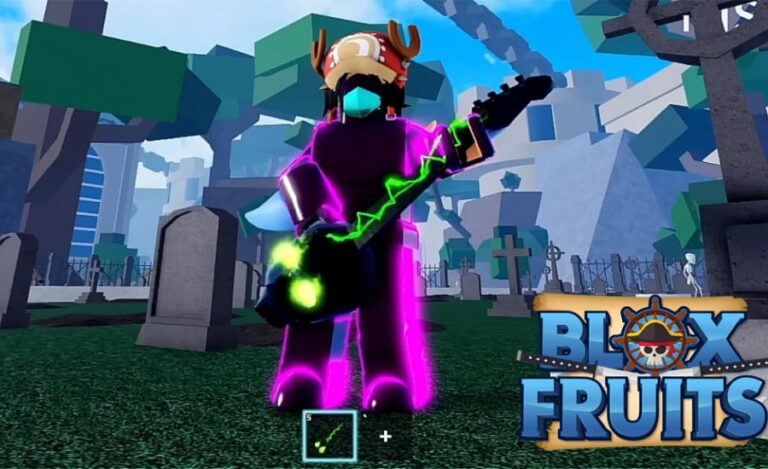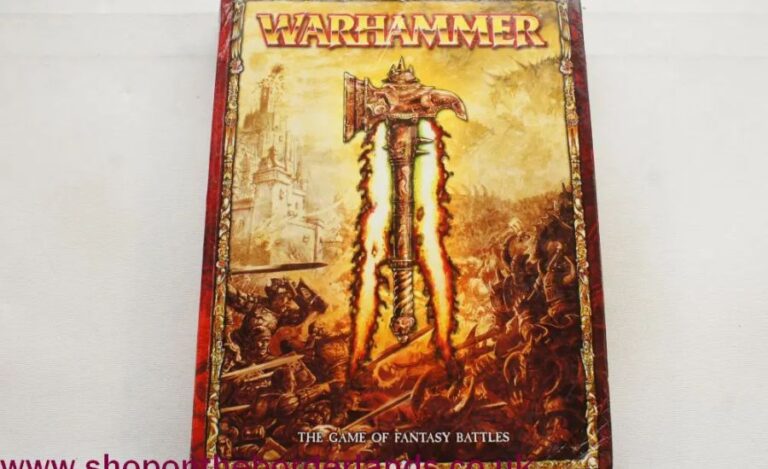Https Twitter Com Craigmacneill Status 758856214566449152 Viral & More
Introduction to Https Twitter Com Craigmacneill Status 758856214566449152
In the ever-evolving world of social media, some moments stand out for their ability to connect with vast audiences in unexpected ways. One such moment was the viral tweet shared by Craig Macneill in 2016. To understand the true significance of this tweet, we must first explore the context in which it was posted, the reasons for its widespread success, and the lasting influence it had on both his audience and the broader digital landscape.
The Context of Craig Macneill’s Viral Tweet
By 2016, social media had become a dominant force in shaping public opinion, entertainment, and cultural trends. During this period, platforms like Twitter were experiencing rapid growth, with millions of users engaging in a constant flow of real-time content. Among the voices rising above the noise, Craig Macneill stood out not just for his work in film and storytelling, but for his creative approach to digital communication.
Macneill’s tweet, while seemingly simple, captured the essence of what makes content resonate with users on social platforms. His ability to tap into relatable themes, humor, and perfect timing helped propel his tweet into the viral sphere. The underlying success of the tweet is a reflection of broader trends in social media behavior and digital communication, offering valuable lessons for anyone looking to increase their own online influence.
The Power of Viral Tweets
A. Engagement and Reach
The defining feature of any viral tweet is its ability to quickly capture attention and inspire user interaction. Craig Macneill’s tweet generated significant engagement, measured by likes, retweets, and replies. These metrics not only indicate the immediate popularity of the tweet but also point to the broader reach it achieved. The more users interact with a tweet, the more likely it is to appear on the timelines of others, exponentially increasing its visibility.
Viral content is often characterized by its widespread sharing—sometimes far beyond the original audience. Craig’s tweet, though simple in its message, connected with users on a personal level, prompting them to engage and share it with their own followers. This organic spread of content is one of the primary reasons why tweets go viral.
B. Relatability as a Driver
A key factor in the success of Craig Macneill’s tweet was its relatability. Social media users tend to gravitate toward content that feels familiar or speaks to their own experiences. Whether it’s humor, sentimentality, or commentary on a current event, relatable content strikes a chord with users and motivates them to engage.
Craig’s tweet likely tapped into a universal emotion or experience, allowing it to resonate with a broad audience. When users feel a connection to a post, they are more likely to like, share, and comment on it, all of which contribute to the tweet’s viral status.
C. Organic Spread of Content
What makes Twitter so unique is its ability to allow content to spread organically through user interactions. When someone engages with a tweet, it is not only shared with their followers but often sparks further conversations and responses. This ripple effect can turn even a small tweet into a viral phenomenon.
For Craig Macneill, the engagement from his initial followers likely triggered an avalanche of additional interactions, as others jumped on the bandwagon. As the tweet gained traction, it appeared on more timelines, reaching audiences beyond Macneill’s direct following.
Breaking Down Craig Macneill’s Influence
A. Who Is Craig Macneill?
Craig Macneill is a talented filmmaker and storyteller, known for his work on a variety of creative projects. While his primary focus may not be social media, his ability to craft content that resonates with people online showcases his understanding of digital culture. By engaging with his audience through tweets, Macneill has positioned himself as a key figure in both the entertainment and digital spaces.
His online presence is marked by consistent engagement with his followers and an ability to understand the nuances of social media interaction. This engagement is crucial in maintaining visibility and relevance in an increasingly crowded digital landscape.
B. Consistent Online Presence
One of the key factors that contributed to the success of Macneill’s viral tweet is his consistent online presence. Maintaining a regular and active presence on social media is essential for building and sustaining a large following. It ensures that your content remains in the public eye and keeps followers engaged.
Macneill’s continued participation in trending topics, along with his interactions with his audience, has helped him stay relevant and visible on platforms like Twitter. Consistent engagement helps foster a loyal community of followers who are more likely to engage with content, leading to a higher likelihood of viral moments like his tweet.
Key Takeaways and Lessons from Craig Macneill’s Viral Tweet
A. Timing Is Key
In the fast-paced world of Twitter, timing can make all the difference between a tweet that goes unnoticed and one that captures the public’s attention. Tweets shared during high-traffic hours, such as weekday afternoons, have a greater chance of being seen by a larger audience.
The success of Craig Macneill’s tweet can be partially attributed to its timing. Whether it was posted during a peak activity time or coincided with a trending topic, the tweet had the perfect conditions to gain attention.
B. Simplicity Wins
In a platform like Twitter, brevity is often the key to success. Tweets that are too long or overly complex can quickly lose the attention of users scrolling through their feeds. Craig Macneill’s tweet demonstrated that simplicity, when executed well, can have a significant impact.
A concise, well-crafted tweet is easier for users to process and share, making it more likely to go viral. This reinforces the idea that sometimes less is more—simple, clear messages often have the most lasting impact.
C. Engagement with Followers
Engagement does not stop after the tweet is posted. Interacting with followers by responding to comments, liking replies, and retweeting can prolong the life of a tweet and keep the conversation going. Craig Macneill’s active engagement with his followers helped sustain interest in his tweet and encouraged continued interaction.
This ongoing interaction can keep a tweet relevant for a longer period, ensuring it remains in circulation and continues to be shared among different networks.
How to Replicate the Success of a Viral Tweet
A. Know Your Audience
One of the most important factors in crafting a tweet that will resonate with users is understanding your audience. Different groups engage with different types of content, so tailoring your posts to their preferences can significantly increase the chances of your tweet gaining traction.
By paying attention to the interests, values, and humor of your followers, you can create content that appeals directly to them, increasing the likelihood of engagement and sharing.
B. Incorporate Humor or Emotion
Humor and emotional appeal are powerful tools for driving engagement on social media. Tweets that make people laugh or evoke an emotional response often see higher engagement rates. Craig Macneill’s tweet likely contained an element of humor or emotion that made it stand out in a crowded Twitter feed.
When crafting your own tweets, consider how you can use humor or tap into emotions like nostalgia, empathy, or excitement to connect with your audience.
C. Leverage Hashtags and Trends
Incorporating relevant hashtags and participating in trending conversations is another effective way to increase the reach of your tweets. By using hashtags, your tweet can become part of a broader discussion, making it more likely to appear in the feeds of users who are following those trends.Craig Macneill’s tweet may have used popular hashtags or aligned with a trending topic, helping it reach a wider audience.
The viral success of Craig Macneill’s tweet is a testament to the power of relatability, timing, and simplicity in social media communication. By understanding your audience, crafting engaging content, and maintaining a consistent online presence, you can increase the chances of your own tweets going viral.
Macneill’s ability to tap into the emotions of his followers, coupled with his strategic engagement on the platform, offers valuable lessons for anyone looking to succeed on Twitter. In an era where social media dominates the digital landscape, mastering the art of creating viral content can have a lasting impact on your online presence and influence.
Understanding the Context and Impact of Craig MacNeill’s Viral Tweet
In 2016, social media was undergoing significant growth, with platforms like Twitter becoming influential in shaping public discourse. Craig MacNeill’s tweet, posted on his Twitter account (https://twitter.com/craigmacneill/status/758856214566449152), emerged during this transformative period, quickly gaining widespread attention. To understand the significance of this post, it is important to explore the context in which it was shared, MacNeill’s background, and the reactions it generated.
Craig MacNeill: A Brief Overview
Craig William MacNeill is an American filmmaker, writer, and editor, known for his distinctive work in the entertainment industry. Born in New England and later moving to Northern Virginia for his high school education, MacNeill pursued his passion for filmmaking at the University of Colorado, where he earned a Bachelor of Fine Arts degree. Under the mentorship of acclaimed filmmakers like Stan Brakhage, MacNeill honed his craft.
MacNeill’s career has been marked by significant accomplishments in both film and television. He directed the psychological thriller Lizzie, starring Chloe Sevigny and Kristen Stewart, and co-wrote and directed the 2015 film The Boy, produced by Elijah Wood. His television work includes directing episodes for HBO’s Emmy-winning series Westworld and Amazon Prime’s Them, which earned an Independent Spirit Award nomination. Other notable credits include Castle Rock, NOS4A2, Monsterland, and the limited anthology series Channel Zero: Candle Cove.
Initial Reactions to the Tweet
The tweet shared by Craig MacNeill sparked immediate attention across Twitter. While the tweet itself might have seemed simple, its timing and content resonated with a large number of users. The tweet was shared and discussed widely, garnering likes, retweets, and comments. MacNeill’s established reputation in the entertainment industry, particularly in the genres of psychological thrillers and horror, likely influenced how the tweet was perceived, adding an extra layer of intrigue to its spread.
The initial reactions were highly engaging, and the tweet quickly became a point of conversation among his followers and beyond. As the tweet gained momentum, it sparked debates and discussions, increasing its reach across the platform. This early interaction set the stage for the post to go viral, influencing social media discourse and gaining significant attention.
The Viral Spread and Metrics
The viral spread of MacNeill’s tweet can be analyzed through key social media metrics. These metrics, including impressions, reach, and engagement, offer valuable insights into how and why the tweet gained such widespread attention.
Impressions refer to the total number of times the tweet appeared on users’ timelines, providing an overall sense of its visibility. Reach is another important metric, indicating the number of unique users who saw the tweet. A tweet’s reach increases as it is shared by users with large followings, amplifying its exposure.
Engagement metrics, such as likes, retweets, and comments, also play a crucial role in determining the virality of a tweet. These interactions not only increase visibility but also extend the tweet’s lifespan as it is further shared within networks.
Multi-Platform Impact
While the tweet originated on Twitter, its impact extended across other social media platforms, such as Facebook, Instagram, and LinkedIn. The interconnected nature of social media allows content to spread quickly, often beyond its original platform. Twitter’s algorithm, which promotes popular content, played a key role in amplifying the tweet’s reach, helping it reach a broader audience beyond MacNeill’s followers.
Other platforms may have helped to further boost the tweet’s visibility as users shared it across networks, contributing to its viral spread. This cross-platform engagement highlights the interconnected nature of social media and the far-reaching potential of viral content.
The Timeline of Virality
The timeline of the tweet’s virality follows a common pattern seen with many viral posts. Initially, the tweet gained traction among MacNeill’s followers, whose interactions helped to increase its visibility. As more users engaged with the tweet, Twitter’s algorithm promoted it to a wider audience, propelling it further into the public consciousness.
The virality of the tweet may have been fueled by its emotional or humorous appeal, creating a trend that resonated with users outside of MacNeill’s immediate follower group. Social media users, especially those within closely-knit online communities, often help amplify viral content by sharing and discussing it within their own networks, which can accelerate the spread of information.
Key Factors Behind the Tweet’s Success
Several factors contributed to the tweet’s viral success:
- Content Relevance: The tweet’s content likely tapped into a broader emotional or cultural theme, making it relatable to a wide audience.
- Timing: Tweets posted during peak hours tend to perform better. The timing of MacNeill’s tweet, possibly aligning with high-traffic periods on Twitter, likely helped boost its visibility.
- Engagement: Interactions between MacNeill and his followers helped keep the conversation going, extending the tweet’s reach and relevance.
Craig MacNeill’s tweet serves as a prime example of how social media can be a powerful tool for spreading content. Through its combination of timing, relatability, and engagement, the tweet went viral, demonstrating the complex dynamics of social media virality. By analyzing the tweet’s spread and understanding the factors that contributed to its success, we can gain deeper insights into the ways in which content can resonate with audiences and amplify in the digital age.
The Power of Active Engagement on Twitter: Craig MacNeill’s Insightful Tweet
Craig MacNeill’s tweet (https://twitter.com/craigmacneill/status/758856214566449152) has sparked a significant conversation on Twitter, drawing attention to the way users interact with the platform. The tweet highlights a key observation: only 20% of Twitter users actively contribute content, while the remaining 80% engage passively, primarily consuming information. This observation underscores the importance of user participation in shaping the platform’s overall content and experience.
MacNeill’s Perspective on Engagement
MacNeill, known for his work in film and television, shares his personal shift from being a passive observer to an active participant on Twitter. In his tweet, he expresses that transitioning to “write mode” has made his Twitter experience “5x more fun/valuable.” By embracing the opportunity to engage in discussions and share his thoughts, MacNeill has not only enhanced his own experience but also emphasizes the value of active participation in building a richer, more dynamic platform for everyone.
This sentiment aligns with Twitter’s core purpose: to serve as a space for diverse conversations and the free exchange of ideas. MacNeill’s message encourages users to engage by sharing their thoughts, questions, and reflections, fostering a more inclusive and interactive environment.
Emotional Appeal and Connection
The emotional impact of MacNeill’s tweet is evident in its widespread resonance. His introspective take on how active participation can transform the Twitter experience strikes a chord with many users, fostering a sense of connection. Studies have shown that emotional resonance is a powerful driver of engagement online, and MacNeill’s tweet is no exception. By describing his experience as “fun” and “valuable,” he taps into the emotional aspects of pleasure and excitement, making his message even more relatable.
Moreover, MacNeill highlights the thrill of expanding one’s audience, emphasizing how “magic happens when a tweet moves out of your network.” This statement underscores the excitement of reaching new people and forming connections through shared ideas, which is one of the core appeals of social media platforms like Twitter.
In inviting others to share their thoughts and experiences, MacNeill taps into users’ emotional desires for self-expression and belonging. This sense of community and shared experience likely played a role in driving the tweet’s viral spread.
The Impact on Twitter Discourse
MacNeill’s tweet has undoubtedly influenced the conversation on Twitter. The platform’s ability to track and amplify trending content means that messages like MacNeill’s can quickly gain traction, reaching a far broader audience than originally intended. As the tweet spread, it ignited lively discussions and debates among users, driving up engagement through likes, retweets, and comments. This surge in interaction increased the tweet’s visibility and propelled it into the wider discourse, illustrating how a single post can influence online conversations and shift public opinion.
Hashtags and Trends
While MacNeill’s tweet did not directly feature hashtags, its viral success likely contributed to the creation or revitalization of related trends. Hashtags play an essential role in organizing content on Twitter and helping users join in on popular discussions. As more people engaged with the tweet, it may have led to the emergence of new hashtags or the resurgence of existing ones, further amplifying the tweet’s reach.
Trends on Twitter are a powerful indicator of how quickly content can spread. When a tweet becomes viral, it can reach millions, significantly impacting the platform’s culture and conversation.
Cross-Platform Influence
While MacNeill’s tweet originated on Twitter, its influence likely spread beyond the platform. Social media is interconnected, and content often travels across different networks, increasing its visibility. Tweets like MacNeill’s can be shared on platforms such as Facebook, Instagram, and LinkedIn, expanding their reach and sparking new discussions. This cross-platform sharing extends the tweet’s life and amplifies its impact.
Additionally, viral content like MacNeill’s tweet can attract the attention of traditional media outlets, including news websites, blogs, and even television programs. This cross-pollination between digital and conventional media further magnifies the tweet’s influence, reaching audiences outside the realm of social media.
Public Response and Engagement
The public’s response to MacNeill’s tweet has been substantial, with many users sharing their personal stories about how shifting from passive observation to active engagement has improved their Twitter experience. These comments not only support MacNeill’s view but also highlight the broader theme of how social media can be more rewarding when users take an active role in the conversation.
Some users remarked on how their experience of Twitter changed for the better once they began contributing more content. This change not only enhanced their enjoyment but also helped them form connections with others on the platform. Additionally, MacNeill’s tweet opened up a channel for his followers to inquire about his work in the film industry, leading to direct interactions and deeper engagement between him and his audience.
Craig MacNeill’s tweet has served as a catalyst for a broader discussion about the power of active participation on social media. By sharing his own experiences, he encourages others to step beyond passive consumption and engage more deeply with the platform. The tweet’s emotional resonance, coupled with its social media impact, has contributed to its viral success and has sparked meaningful conversations about the value of online engagement. This tweet not only highlights the potential for connection in the digital age but also showcases how social media can foster richer, more interactive experiences for all users.
Trends Generated
The viral spread of Craig MacNeill’s tweet (https://twitter.com/craigmacneill/status/758856214566449152) likely led to the emergence of related hashtags and trends. Hashtags are an essential tool on Twitter, helping users categorize and engage with popular topics. While specific hashtags associated with MacNeill’s tweet are not mentioned, viral content often sparks the creation of new hashtags or brings attention to existing ones.
In the context of Twitter, trends are dynamic conversations or phrases that quickly gain popularity. When something trends, it can reach a broad audience, often involving millions of users. The widespread engagement with MacNeill’s tweet suggests it played a role in generating or contributing to a trend, amplifying its reach and overall impact on the platform.
Platform Effects
Although the tweet originated on Twitter, its influence likely spread beyond the platform. Social media’s interconnected nature allows content to travel across various platforms, expanding its reach. As MacNeill’s tweet gained popularity, it may have been shared on other platforms such as Facebook, Instagram, and LinkedIn, further extending its influence and sparking cross-platform discussions.
The ripple effects of viral content like this tweet are substantial. Popular posts often make their way to other media outlets, including news articles, blog posts, or television segments. This crossover from social media to traditional media boosts the content’s visibility, amplifying its influence far beyond its original platform.
Long-Term Implications
The viral success of MacNeill’s tweet has had significant long-term effects on social media behavior, content creation, and user engagement. These shifts are not only visible in the immediate aftermath but also have lasting consequences for how people interact with social media platforms.
Changes in Online Behavior
The success of the tweet highlights a shift in online behavior, from passive consumption to active participation. MacNeill’s message about the power of engaging in “write mode” resonated with many users, encouraging them to contribute more actively to online conversations. This shift aligns with Twitter’s role as a platform for dynamic discussions, where users share thoughts, questions, and ideas freely. As more users embrace active participation, we can expect a more interactive and vibrant social media environment.
Influence on Future Content Creation
The viral nature of MacNeill’s tweet has also impacted future content creation strategies. Marketers and content creators are now more aware of how a single tweet can shape online conversations and influence public opinion. This awareness has prompted a shift toward creating engaging, shareable content that resonates with users on a personal level.
The tweet’s success demonstrates the power of authenticity and personal storytelling in content creation. MacNeill’s reflective tone and genuine experience connected with readers, encouraging other creators to share their own insights. This trend toward relatability is shaping a new wave of engaging, authentic content across platforms.
Lessons for Social Media Users
MacNeill’s viral tweet offers key lessons for social media users. One significant takeaway is the importance of active participation. By engaging in “write mode,” users can make their social media experience more enjoyable and valuable. This shift encourages users to move beyond passive consumption and contribute their own thoughts, fostering a more dynamic online community.
Another important lesson is the value of authenticity. MacNeill’s tweet resonated because it was rooted in genuine personal experience. This authenticity built a strong connection with readers, resulting in higher engagement and sharing. Social media users can take inspiration from this by being more open and authentic in their online interactions, strengthening relationships with their followers.
Finally, the tweet demonstrates how a single post can have a widespread impact, encouraging users to share their ideas and participate in meaningful discussions. This reinforces the notion that everyone’s voice matters in the digital age.
Conclusion
The long-term implications of Craig MacNeill’s tweet extend far beyond its initial viral success. It has contributed to changing online behavior, influenced content creation strategies, and provided valuable lessons for social media users. As more individuals and creators adapt to these shifts, we can expect the social media landscape to become even more engaging, authentic, and interactive. This tweet’s lasting influence will continue to shape the way we engage with digital content in the future.
Facts
- Spreadsheet Terminology: Familiarizing yourself with terms like “cell reference,” “range,” and “formula” is key to mastering spreadsheets. These terms are the foundation of effectively managing data.
- Data Insights: Spreadsheets allow users to extract valuable insights from data through filters, charts, and pivot tables. These tools can help identify trends, patterns, and outliers that might otherwise go unnoticed.
- Efficiency with Keyboard Shortcuts: Mastering keyboard shortcuts for tasks like navigating between cells or applying formatting can drastically improve your speed and efficiency in spreadsheet use. For example, using Ctrl+C for copy and Ctrl+V for paste helps streamline work.
- Optimizing for Mobile: With many users working on spreadsheets via mobile devices, understanding how to optimize spreadsheets for smaller screens and mobile interfaces can ensure a smoother experience when on the go.
FAQs
1. What are spreadsheet rectangles?
- Spreadsheet rectangles refer to the selection of a range of cells, often used to group data or perform operations like copying, formatting, or applying formulas. Understanding how to effectively use these rectangles can help you manage large sets of data more efficiently.
2. How can I optimize the performance of my spreadsheets?
- To enhance performance, limit the use of excessive formulas or complex calculations, minimize the number of open tabs, and use efficient data structures. Reducing the number of cells with unnecessary formatting or data validation can also help speed up your sheets.
3. What are the common mistakes to avoid when using spreadsheets?
- Forgetting to use absolute cell references when needed.
- Overcomplicating formulas without understanding their impact on sheet performance.
- Ignoring proper data organization, leading to errors in data analysis.
- Neglecting to back up your data or save versions regularly.
4. What is the difference between a workbook and a worksheet?
- A workbook is the entire file in spreadsheet programs like Google Sheets or Excel. It contains multiple worksheets, which are individual tabs or pages within the workbook where data is stored and manipulated.
5. How can I group cells in a spreadsheet?
- You can group cells using the “Merge Cells” option to combine two or more cells into one. This is useful for creating headers or organizing data visually. However, be cautious, as excessive merging can complicate data analysis and sorting.
By incorporating these best practices and understanding key concepts, you can maximize the potential of your spreadsheets while avoiding common pitfalls. The more familiar you are with the tools and features, the easier it becomes to organize, analyze, and present your data effectively.
For more Information About game visit idealrular





